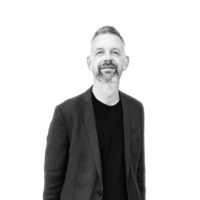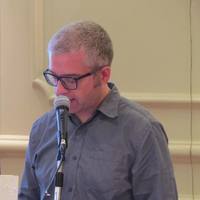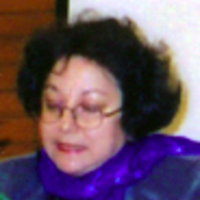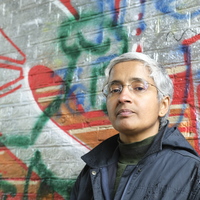Journal articles by Kurt Vanhoutte

If you had visited Paris, Barcelona, London, New York or Berlin in the nineteenth century, it is ... more If you had visited Paris, Barcelona, London, New York or Berlin in the nineteenth century, it is quite probable that on an evening out you might have attended an astronomy performance. It was, increasingly, a time for mass involvement in science. Public demonstrations and lectures in academic venues and observatories, in public spaces, theatres and opera were widely available to urban publics. These events were often intermedial shows combining theatrical modalities with optical instruments, mechanical devices, moving transparent paintings and magic lantern slides. The shows mingled heavenly and earthly concerns, delivering cosmological narratives that also thematised the place of man, progress and technology in a rapidly evolving world. As with many other shows of the nineteenth and early twentieth century such as wax museums, panoramas or international exhibitions, the distinction between sensational entertainment and scientific demonstration was often difficult to draw and prompted debates. The appeal of astronomical spectacles did not wane in the twentieth century, they merely took new forms when the first dome-shaped projection planetariums began appearing in German cities in the 1920s. The new modern theatres of the stars were greeted with awe and reverence, and to this day they testify to the vivid public appetite for both myth and progress. In these venues audiences engaged with science, technology and the world; modernity negotiated the contradictions of its own times.

Early Popular Visual Culture (special issue on Spectacular Astronomy), 2017
After an extensive tour throughout Europe, including venues such as Amsterdam, London and Brussel... more After an extensive tour throughout Europe, including venues such as Amsterdam, London and Brussels, the French entrepreneur and magician Henri Robin arrived in Paris in 1862, where he opened a new theatre on the legendary Boulevard du Temple. His arrival remarkably coincided with the destruction of this renowned hub of popular visual culture as it was cleared to make way for Hausmann’s far-reaching programme of urban modernisation. Nonetheless, Robin started providing scientific entertainment for audiences to be both beguiled and informed, and managed to do so very successfully throughout the following five years. His evening shows consisted of a mix of astronomical sciences, magic and the evocation of ghosts. This article addresses Robin’s career in relation to the changing ideas of theatricality and his remarkable persistence in commingling astronomy and magic within a theatrical context. It will show that Robin’s initial concept of theatricality is concretised in his explicit demonstration to the spectator that they were at the theatre, and that this was indeed the place where the wonders of the heavens could pry open the matter of their own understanding. Correspondingly, Robin’s career fizzled out during the Second Empire, when scientific activities were dispersing rapidly across different public sites, altering and re-reshaping the appeal of the physiques amusantes. The rise of professional conférences alongside the waning appeal of what the critic Théophile Gaultier termed ‘ocular spectacle’, eventually forced theatre and astronomy into fixed and discreet domains. As such, the story of Henri Robin and his science-based spectacles articulates major shifts in the various relationships between art and science, and theatre and astronomy.
International Journal of Performance Arts and Digital Media, 2014
Since the early nineteenth century and into the twenty-first century, the planetarium – a theatre... more Since the early nineteenth century and into the twenty-first century, the planetarium – a theatre built for presenting educational and entertaining shows about astronomy – remained a locus of innovations in the contexts of both performance and science. These spectacles animated the celestial bodies – the stars, planets and comets – in front of lively audiences, and delivered cosmological narratives that thematised the place of man, scientific progress and technology within a rapidly evolving world. These popular events were exemplary intermedial shows for the ways in which they combined aspects of the theatre with moving transparent paintings, magic lantern slides and mechanical devices.
Contemporary Theatre Review, 2010
... As a result, the immersive state is that of a body at the intersection of a multiplicity of i... more ... As a result, the immersive state is that of a body at the intersection of a multiplicity of images and reconstructions produced by media, lacking a central reference point. View larger version(177K),Image 2 'The performances create a new realm, a transitional space where video ...

Image Narrative, Oct 17, 2012
This article takes the context of practice-based research as a starting point to discuss the meta... more This article takes the context of practice-based research as a starting point to discuss the metacritical potential of allegorical work. It is suggested that the baroque impulse in allegory today can be understood in terms of what Gregory Ulmer terms 'heuretics', an alternative hermeneutics that prompts the connotation of heresy in the field of interpretation and that, due to its logic of invention and creativity, seems to meet the requirements of art as research. The inherent theoretical sensitivity of allegory is more specifically exemplified by a detailed account of a recent installation by Belgian painter and researcher Karin Hanssen. Her The Borrowed Gaze/Variations GTB presents a series of appropriations of the famous Paternal Admonition by genre painter Gerard ter Borch, (1617-1681). This contribution proposes to understand the ten paintings, each one presenting a variation on the same Rückenfigur, along the lines of Walter Benjamin's theory of baroque allegory and to regard them as a step by step emancipation of the female figure. Through tracing the dialogue between the Benjaminean mode of allegory and Hanssen's successive appropriations I hope to show that The Borrowed Gaze/Variations GTB alters and ultimately enriches the original connotations of the Golden age. Résumé Cet article prend comme point de départ le contexte de la recherche artistique pour ouvrir une discussion sur le potentiel méta-critique de l'allégorie. L'impulsion baroque qu'on retrouve aujourd'hui dans l'allégorie peut-être interprétée comme ce que Gregory Ulmer qualifie de 'heuretics', une sorte d'herméneutique alternative qui incorpore la connotation d'hérésie et qui semble en même temps bien correspondre à l'idée de recherche artistique avec sa logique d'invention et de créativité. De manière plus spécifique, la sensibilité théorique inhérente à l'allégorie sera exemplifiée par l'analyse détaillée d'une installation récente conçue par Karin Hanssen, peintre et chercheuse belge. Son ouvrage The Borrowed Gaze/Variations GTB présente une série d'appropriations de la fameuse peinture Admonition paternelle de Gerard ter Borch (1617-1681). De ces dix peintures dont chacune présente une variation sur le même Rückenfigur, cet article présente une interprétation qui suit la théorie benjaminienne de l'allégorie, tout en proposant Vol. 13, No. 3 (2012) 66 qu'il convient d'abord de les considérer comme la figuration de l'émancipation graduelle d'une figure féminine. En retraçant le dialogue entre l'allégorie benjaminienne d'une part et les appropriations successives par Hanssen d'autre part, j'espère pouvoir démontrer que The Borrowed Gaze/Variations GTB modifie et, en fin de compte, enrichit les connotations originelles de l'oeuvre qu'on associe d'avantage avec le Siècle d'Or aux Pays-Bas.

Foundations of Science, Jan 1, 2011
This paper analyzes from a pragmatic postphenomenological point of view the performative practice... more This paper analyzes from a pragmatic postphenomenological point of view the performative practice of CREW, a multi-disciplinary team of artists and researchers. It is our argument that this company, in its use of new immersive technologies in the context of a live stage, gives rise to a dialectics between an embodied and a disembodied perspective towards the perceived world. We will focus on W (Double U), a collaborative interactive performance, where immersive technology is used for live exchange of vision. By means of a head mounted omni-directional camera and display the fields of vision of two participants are swapped, which enables the participants to perceive the world through another person's point of view. This intermedial experience brings a classic dichotomic perception of space to falter: material reality as a 'live' condition can no longer be opposed to a virtual mediated reality. In the shifting moment between the embodied and the perceived world, on the fracture between what one sees and what one feels, the distinction between live and mediated is blurred, moreover, can no longer be made. The perception of the body is pushed to the extreme, causing a most confusing corporal awareness, a condition that intensifies the experience and causes an altered sense of presence. In a dynamic cognitive negotiation, one tends, however, to unify the divergent ontologies of the 'real' and the 'virtual' to a meaningful experience. In this respect, we refer to recent neurological experiments such as the 'rubber hand illusion' in order to clarify the spectator's tendency to fuse both ontologies and to embody a coherent image-world.

Foundations of Science, Jan 1, 2011
Taken together, the commentaries by Sigrid Merx and Tom Paulus suggest a remarkable dialectical r... more Taken together, the commentaries by Sigrid Merx and Tom Paulus suggest a remarkable dialectical relationship with regard to our article "Performing Phenomenology: Negotiating Presence in Intermedial Theatre". On the one side a lack of elaborated political consciousness is being detected, while on the other side an alleged surplus of political consciousness is being criticized. Although apparently contradictory, these reactions seem to originate in the same ideological stress: both are somehow haunted by the legacy of Bertolt Brecht and the ideology of the image implicit in critical theory. We argue that the tension between illusion and deconstruction indeed is crucial to the history of the mediatized image, but that it should be taken to a deeper level where it not only remains unsolved but where it forms the heart of the experience. The user knows very well that she is being fooled and, moreover, generously lets herself being fooled. We historicize this fundamental ambivalence with a short excursion in pre-cinematic, pre-Brechtian times. Throughout the nineteenth and the twentieth century, periodic shifts between illusion and its suspension indicates the emergence of what we, in the digital era, might refer to as a 'meta-realism', an imagery that incorporates its own critique inside itself. If this analysis holds true, we eventually have to reformulate the stakes of deconstruction and push critical theory beyond its own borders.
Foundations of Science, 2013
... If there are lessons to be learned from Sobchack's reaction, they probably derive from t... more ... If there are lessons to be learned from Sobchack's reaction, they probably derive from the fact that the discourse about the virtual and the real is in a deadlock, where none of the positions,hypersemiotics versus the body-self, seem to meet the condition to move to another state ...










Uploads
Journal articles by Kurt Vanhoutte
Het is de stof waaruit performance gemaakt is. Maar in zijn verdichte vorm blijkt het ook bijzonder zeldzaam, uniek zelfs. Wat is het precies? Leeft het in taal? Verschijnt het in de ruimte? Verandert het doorheen de tijd? Is het bovenal lichamelijk? Is het wederkerig, uitdruk- king van een verbond tussen de actrice of acteur en haar
of zijn publiek?
We zijn geneigd te denken dat aura verschijnt in wisselwerking met de media, zoals de filmster destijds kon rijzen op het zilveren scherm. Feit is dat charisma macht impliceert, de macht om te fascineren en de blik van de ander te gijzelen. Misschien is het een aangeboren kwaliteit die wortelt in persoonlijke intuïtie en het uitzonderlijk vermogen zich te onderscheiden – ‘als vanzelf’. Of is dat een mystieke vooronderstelling, die door kunstopleidingen net wordt weerlegd, en kan présence aangeleerd, gecultiveerd en ontwikkeld worden?
Deze vragen vormen de kiem van een onderzoek naar dat fascinerende iets dat moeilijk te grijpen valt maar toch zo essentieel blijkt in theater en film. In dialoog met praktijk- deskundigen uit de Vlaamse theater- en filmwereld willen onderzoekers van The Research Centre for Visual Poetics de kenmerken en voorwaarden van charisma in kaart brengen en analyseren. Visual Poetics is de onderzoeksgroep die spoort met de opleiding theater- en filmwetenschap van de Universiteit Antwerpen. In april 2014 organiseerde de groep een onderzoeksseminarie met de gerenommeerde literatuurwetenschapper Hans Ulrich Gumbrecht. Tijdens een lentesymposium dat hieraan voorafging werden verschillende makers, regisseurs en theaterdocenten uitgenodigd vanuit hun praktijkervaring een licht te werpen op charisma.
Meer informatie : www.visualpoetics.be
Lees het eerste interview met Jan Steen in Etcetera n° 139: https://issuu.com/e-tcetera/docs/etcetera_139/6
Het derde interview met Lucas Vandervost, Jan Peter Gerrits, en Rosa Vandervost verscheen in FORUM+ voor Onderzoek en Kunsten (22:3) : https://issuu.com/koninklijkconservatoriumantwerpen/docs/forum_jg22_nov-dec_lr
the orbiting planets. Going back at least to the eighteenth century,
Vanhoutte traces the history of the orrery as an inherently theatrical
device, and demonstrates that the main purpose of a human orrery is to
enact the dynamics of the universe by playing the role of the planets,
“walking the orrery” as it were, in a scale model laid out across the landscape. Enacting the orrery in lockstep, Vanhoutte argues, makes users
immediately experience the planets moving at different speeds. This
dynamic interactive map of the solar system gives users the opportunity,
through performance and play, to cognitively map one’s sense of presence
and direction in space.